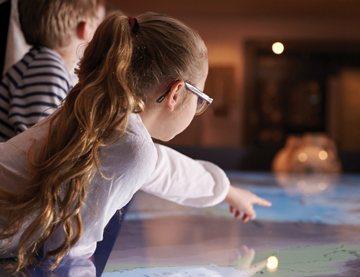Banner Image

To help students engage with course content teachers can plan projects, activities and tasks that get students out of their chairs and moving in the classroom.
Teachers cannot do the work for students, but they can create dynamic and thought-provoking experiences and activities that are connected to who our students are and who they want to be – lessons that enable students to contemplate questions and conduct experiments to help plant their own seeds.
Such lessons will set up an environment in which students can measure outcomes, consider various solutions, and imagine different possibilities.
Designing Dynamic Learning Experiences
Showing why lessons matter: It’s essential that teachers help students understand how what they’re learning in school relates to their lives. If a student asked ‘Why do we need to learn this?’ explain that the task will be useful to them in school and beyond and encourage them to apply what they’ve learned.
Providing choice: If we know what we most want our students to learn, we can plan the lesson based on those outcomes and offer students different pathways to reach them.
For example - In a science class, if students are learning about Rube Goldberg machines, they can decide on a task they want to complete and assemble one using various objects of their choice.
Giving students choices in the work they do promotes engagement - like adults, students are more likely to engage in work that matters to them.
Incorporating movement: Activities such as chat stations encourage students to add their views to classroom discussions and show them that their opinions matter.
In setting up chat stations, teachers can post questions at each station. Students can move around the room in groups, discussing each question before moving on.
Teachers can encourage listening by providing students with 30 seconds to briefly record the gist of what they heard, followed by an opportunity to ask a follow-up question.
Building in Time for Reflection
Throughout the school year, offer students opportunities for reflection so they can consolidate what they’ve learned and determine what they did well and what they can do differently next time.
Toward the end of the school year, when student engagement begins to wane, ask students to reflect on the work they did this year. Ask students what did you produce this year that you’d most like to share with your peers? Why is it worthy of sharing? This share can culminate in a gallery walk consisting of written pieces, videos and demonstrations.
Deeper learning is possible when students are actively involved in the life of the classroom, understand the connection between their schoolwork and the rest of their lives, and have repeated opportunities for reflection.
To read this article in full visit https://www.edutopia.org/article/designing-lessons-engagement
Source https://www.edutopia.org by Beth Pandolpho
